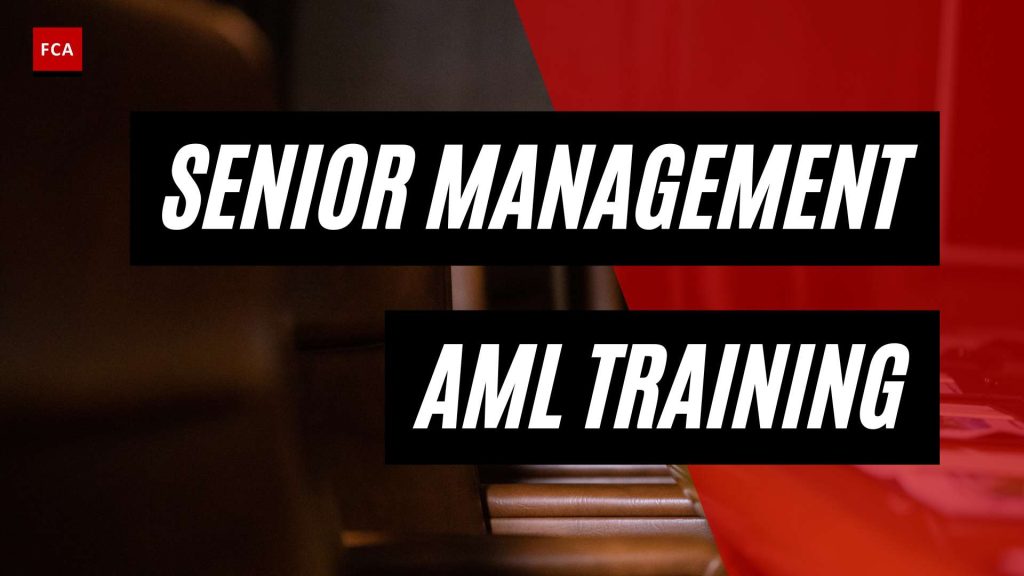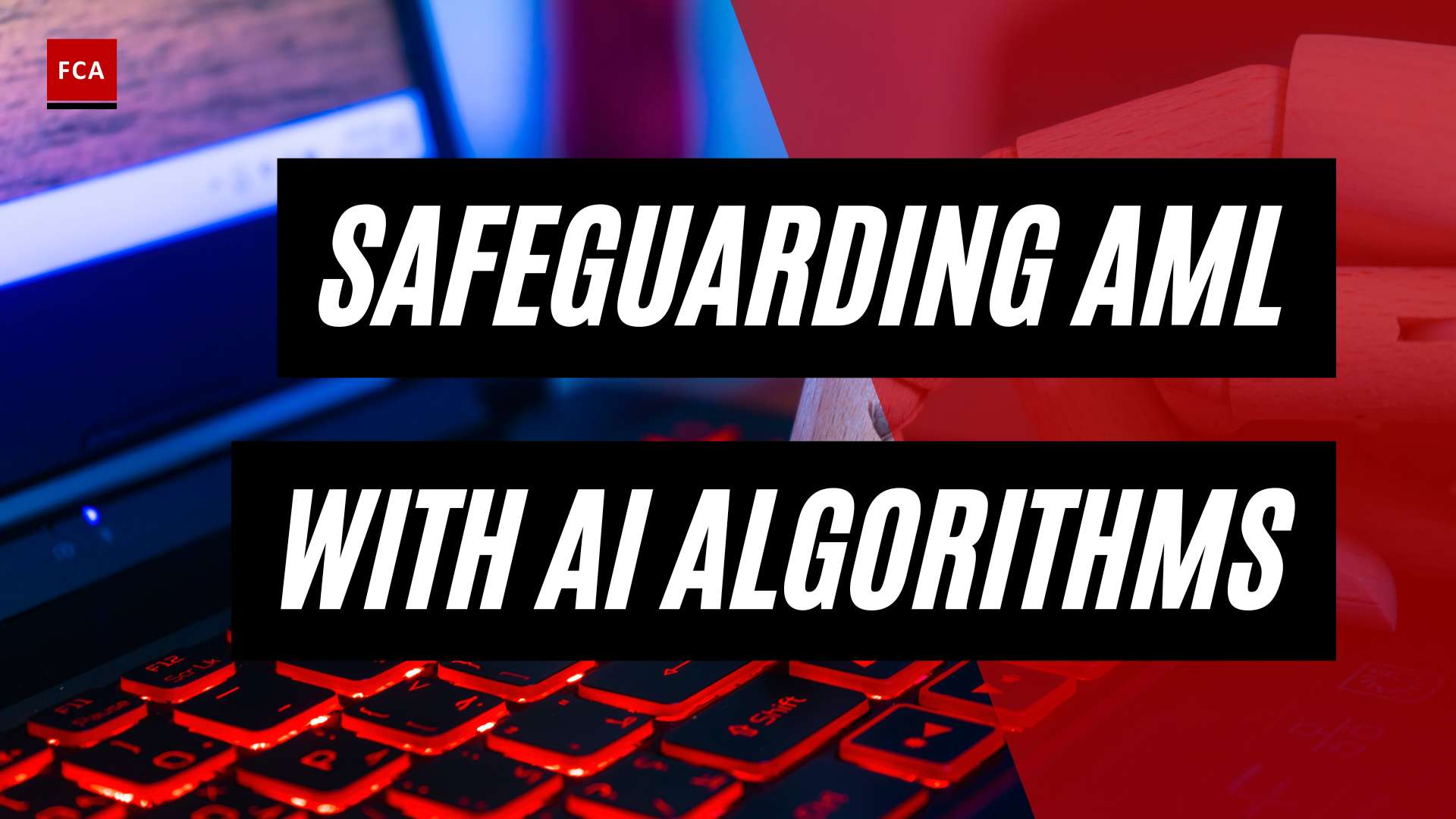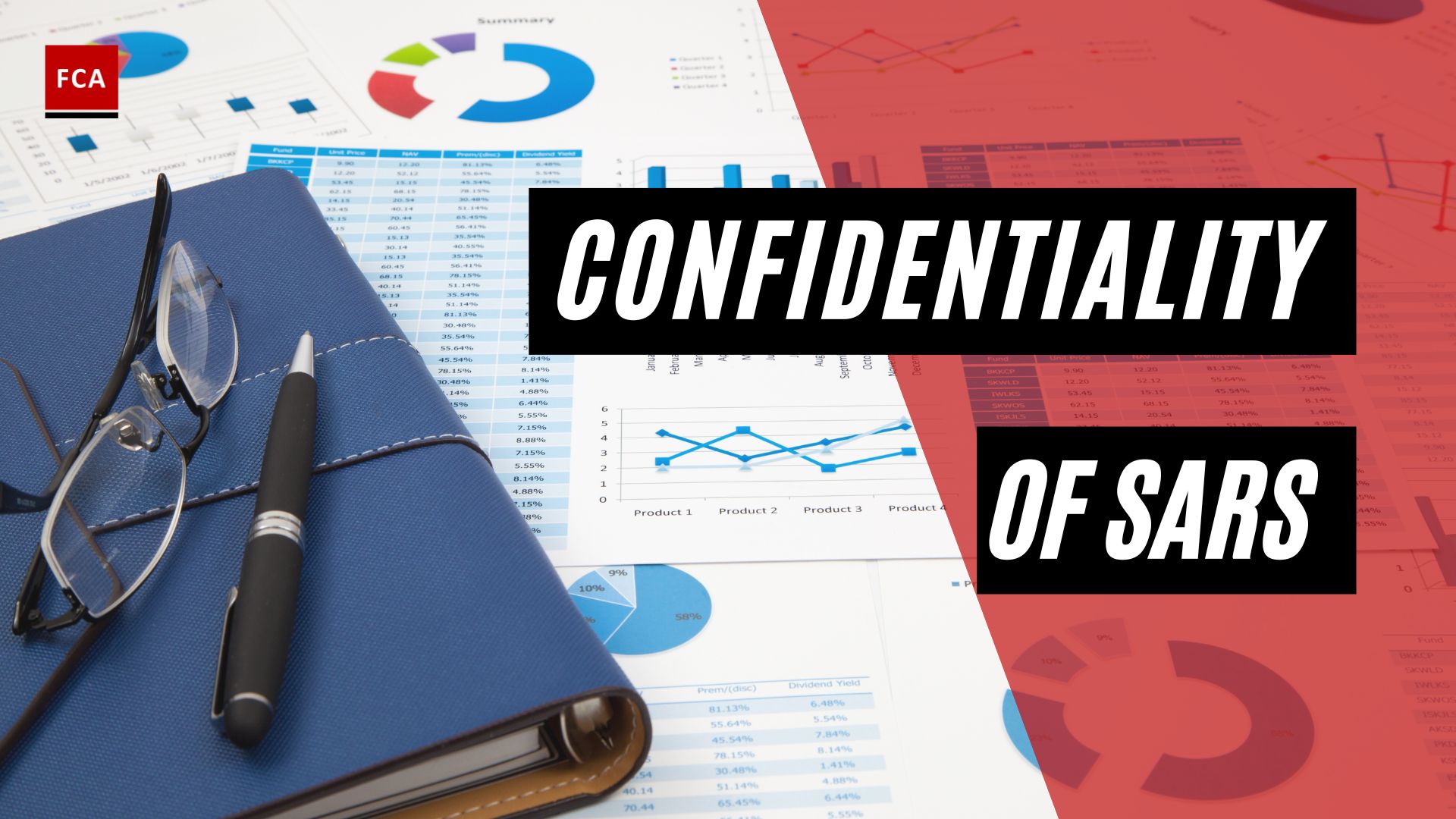AML Training for Senior Management
When it comes to anti-money laundering (AML) compliance, providing effective training to senior management is crucial for ensuring the organization’s commitment to preventing illicit financial activities. AML training equips senior management with the knowledge and skills necessary to fulfill their compliance responsibilities and lead by example. This section explores the importance of AML training for senior management, regulatory requirements, and key areas covered in such training.
Importance of AML Training for Senior Management
Senior management plays a pivotal role in effective AML compliance. They are responsible for setting the tone at the top, establishing an effective compliance program, and ensuring sufficient resources are allocated to compliance efforts (KPMG Report). AML training for senior management is essential to ensure they have a thorough understanding of the risks associated with money laundering and terrorist financing, as well as the legal and regulatory requirements that govern AML compliance.
By participating in AML training programs, senior management demonstrates their commitment to compliance and sends a clear message to the entire organization that AML efforts are taken seriously. A well-informed senior management team is better equipped to make informed decisions, allocate resources effectively, and foster a culture of compliance throughout the organization (NICE Actimize).
Regulatory Requirements for Senior Management
AML regulations impose specific responsibilities on senior management to ensure effective compliance. It is essential for senior management to be aware of these requirements and fulfill their obligations. Failure to do so could result in personal liability and legal consequences (NICE Actimize).
Regulatory requirements for senior management in AML compliance include:
- Ensuring that appropriate AML policies, procedures, and controls are in place and regularly reviewed and updated.
- Overseeing the implementation and effectiveness of the organization’s AML program.
- Providing adequate resources, including staffing and technology, to support AML compliance efforts.
- Demonstrating a commitment to AML compliance through active involvement and participation in training programs.
- Establishing a compliance culture throughout the organization and promoting ethical behavior.
Compliance with these regulatory requirements is essential to mitigate the risk of regulatory penalties, reputational damage, and legal liability.
Key Areas Covered in Senior Management AML Training
Effective AML training for senior management covers a range of key areas to ensure a comprehensive understanding of AML compliance. These areas may include:
- Understanding the risks of money laundering and terrorist financing that the organization may face.
- Recognizing red flags and suspicious activities that may indicate potential money laundering or illicit financial transactions.
- Familiarity with the legal and regulatory framework governing AML compliance, including relevant laws, regulations, and reporting obligations.
- Knowledge of the consequences of non-compliance, including regulatory penalties, fines, reputational damage, loss of trust, and even potential criminal liability.
- Understanding the importance of establishing and maintaining an effective AML program, including appropriate policies, procedures, and internal controls.
- Knowing how to escalate AML-related issues and report suspicious activities according to internal and regulatory requirements.
By covering these key areas in senior management AML training, organizations can ensure that senior executives are equipped to fulfill their compliance responsibilities and effectively lead AML efforts within the organization.
AML training for senior management should be ongoing and incorporate regular updates on emerging trends, regulatory changes, and best practices. Staying informed and up to date is crucial in a constantly evolving financial landscape to effectively mitigate the risks associated with money laundering and illicit financial activities.
Developing an Effective AML Training Program
To ensure senior management is equipped with the necessary knowledge and skills to effectively lead Anti-Money Laundering (AML) compliance efforts, it is crucial to develop an AML training program that is tailored to their needs. This section will explore the key components of an effective AML training program for senior management, including tailoring the training, incorporating regulatory and legal requirements, and providing ongoing training and updates.
Tailoring AML Training to Senior Management
When designing an AML training program for senior management, it is essential to consider their specific roles and responsibilities within the organization. The training should focus on addressing the unique challenges and risks faced by senior management in relation to AML compliance. This may include topics such as:
- Understanding the regulatory landscape and requirements specific to senior management (aml regulations for senior management).
- Recognizing red flags and suspicious activities that may indicate potential money laundering activities.
- Understanding the consequences of non-compliance, including regulatory penalties, fines, legal liability, and reputational damage.
- Knowing how to effectively oversee the implementation of the organization’s AML program and ensure sufficient resources are allocated to compliance efforts.
By tailoring the training to the specific needs of senior management, they can gain a deeper understanding of their responsibilities and the importance of their role in promoting a culture of compliance throughout the organization.
Incorporating Regulatory and Legal Requirements
AML training for senior management should incorporate relevant regulatory and legal requirements specific to their roles. This includes providing an overview of applicable laws, regulations, and industry best practices. The training should cover topics such as:
- The legal and regulatory framework governing AML compliance.
- Requirements for reporting suspicious activities and maintaining adequate record-keeping.
- The role of senior management in setting the tone at the top and creating a culture of compliance.
- The potential personal liability of senior management in AML compliance failures.
By ensuring that senior management is well-informed about their legal and regulatory obligations, they can make informed decisions and effectively oversee the implementation of the organization’s AML program.
Ongoing Training and Updates for Senior Management
AML training for senior management should not be a one-time event but rather an ongoing process. It is crucial to provide regular updates on emerging trends, regulatory changes, and best practices in AML compliance. This ensures that senior management stays informed and can adapt their strategies and decision-making accordingly.
Ongoing training can be achieved through various methods, such as:
- Conducting regular workshops and seminars specifically designed for senior management.
- Providing access to relevant publications, industry reports, and resources.
- Encouraging participation in industry conferences and forums focused on AML compliance.
- Establishing a system for sharing internal updates and reminders regarding AML compliance obligations.
By providing ongoing training and updates, senior management can stay abreast of the evolving AML landscape and effectively lead their organizations in mitigating money laundering risks.
An effective AML training program tailored to senior management helps ensure they have the necessary knowledge and skills to fulfill their compliance obligations. By incorporating regulatory and legal requirements and providing ongoing training and updates, organizations can enhance their AML compliance efforts and mitigate the risk of non-compliance.
Responsibilities of Senior Management in AML Compliance
Senior management plays a critical role in ensuring effective anti-money laundering (AML) compliance within an organization. Their responsibilities encompass setting the tone at the top, ensuring sufficient resources for compliance, and overseeing the implementation of the AML program.
Setting the Tone at the Top
One of the primary responsibilities of senior management is to set the tone at the top, establishing a culture of compliance throughout the organization. By visibly demonstrating their commitment to AML compliance, senior management sends a clear message that adherence to AML regulations is a top priority. This commitment sets the standard for ethical behavior and fosters a compliance-oriented environment (KPMG Report).
Ensuring Sufficient Resources for Compliance
Senior management must allocate the necessary resources to support AML compliance efforts effectively. This includes providing adequate funding, staffing, and technology infrastructure to ensure that the organization can effectively detect, prevent, and mitigate money laundering risks. By allocating sufficient resources, senior management demonstrates their commitment to AML compliance and helps create a robust compliance framework (FlagRight).
Overseeing Implementation of AML Program
Senior management is responsible for overseeing the implementation of the organization’s AML program. They should ensure that policies, procedures, and controls are designed and implemented effectively to address the unique AML risks faced by the organization. This involves regularly reviewing and updating the AML program to align with regulatory requirements and industry best practices. By actively monitoring the implementation of the AML program, senior management can identify gaps and take appropriate actions to enhance overall compliance (NICE Actimize).
By fulfilling their responsibilities, senior management plays a crucial role in building a strong AML compliance framework. Their commitment, allocation of resources, and oversight help ensure that the organization is equipped to prevent and detect money laundering activities. A culture of compliance starts from the top, and it is through the active involvement of senior management that organizations can effectively combat money laundering risks.
Consequences of Inadequate AML Training for Senior Management
In the realm of Anti-Money Laundering (AML) compliance, the importance of providing effective training to senior management cannot be overstated. Inadequate AML training for senior management can have serious consequences, both for the organization and the individuals responsible. This section explores the potential ramifications of insufficient AML training for senior management, including regulatory penalties and fines, reputational damage and loss of trust, as well as legal and criminal liability.
Regulatory Penalties and Fines
Failure to meet AML compliance requirements can lead to significant fines and penalties for the organization. Regulatory bodies are committed to enforcing AML regulations to maintain the integrity of the financial system. For example, Capital One was fined $390 million for both willful and neglectful violations of the Bank Secrecy Act (BSA), failing to report $16 billion worth of transactions despite several warnings from regulators (Unit21). These financial penalties can have a substantial impact on the organization’s bottom line and erode shareholder value.
Reputational Damage and Loss of Trust
Inadequate AML compliance training for senior management can result in reputational damage and a loss of trust from customers, stakeholders, and the public. Financial institutions are expected to maintain high standards of integrity and ethical conduct. Instances of non-compliance or involvement in money laundering activities can seriously undermine the institution’s reputation and erode the trust that customers and the public place in them. Rebuilding trust after a compliance failure can be a challenging and lengthy process.
Legal and Criminal Liability
The consequences of poor AML compliance training for senior management can extend beyond regulatory penalties and reputational damage. In cases where money laundering activities go undetected or unreported due to inadequate training, senior management may face legal and criminal liability. Senior management could be held personally liable if they were directly involved in money laundering activities or if it can be proven that they were negligent in performing their oversight duties. The potential for personal liability emphasizes the importance of ensuring that senior management receives comprehensive AML training and is equipped to fulfill their obligations (NICE Actimize).
To mitigate these consequences, it is crucial for organizations to invest in robust AML training programs specifically tailored to senior management. These programs should cover the regulatory landscape, money laundering risks, and the role that senior management plays in ensuring AML compliance. By engaging in training programs, understanding the risks, and taking proactive steps to mitigate those risks, senior management can demonstrate their commitment to compliance and enhance operational resilience.
In the next section, we will delve deeper into the best practices for senior management AML training, including the importance of engaging in training programs, understanding money laundering risks, and taking proactive steps to mitigate those risks.
Best Practices for Senior Management AML Training
To ensure effective AML compliance within an organization, it is crucial for senior management to actively engage in AML training programs, understand money laundering risks, and take proactive steps to mitigate those risks. By doing so, they can demonstrate their commitment to compliance and help safeguard the organization from regulatory penalties, reputational damage, and legal liability.
Engaging in AML Training Programs
Senior management should actively participate in AML training programs tailored to their roles and responsibilities. These training programs provide essential knowledge about AML regulations, industry best practices, and emerging trends in financial crime prevention. By staying informed and up-to-date, senior management can effectively oversee the implementation of the organization’s AML program and make informed decisions regarding compliance strategies.
Understanding Money Laundering Risks
Senior management must have a comprehensive understanding of the risks associated with money laundering activities. This includes recognizing the methods and techniques used by criminals to launder illicit funds, understanding the potential vulnerabilities within the organization’s operations, and identifying red flags that may indicate suspicious activities. By understanding these risks, senior management can make informed decisions to strengthen the organization’s AML controls and ensure compliance.
Proactive Steps to Mitigate Risks
In addition to understanding risks, senior management should take proactive steps to mitigate those risks within their organizations. This includes establishing robust internal controls, implementing effective monitoring systems, and conducting regular risk assessments. By regularly reviewing and enhancing the organization’s AML program, senior management can ensure that it remains effective and aligned with regulatory requirements.
It is important for senior management to foster a culture of compliance throughout the organization. This includes providing AML training for employees at all levels, promoting awareness of AML policies and procedures, and encouraging reporting of suspicious activities. By creating a compliance-oriented environment, senior management sets the tone for the organization and reinforces the importance of AML compliance.
By engaging in AML training programs, understanding money laundering risks, and taking proactive steps to mitigate those risks, senior management plays a critical role in ensuring effective AML compliance within their organizations. Their commitment to compliance and their active involvement in training and oversight are essential for enhancing operational resilience and maintaining the integrity of the organization’s financial system.
To learn more about AML training for senior management and other aspects of AML compliance, you may find it helpful to refer to resources such as aml training for board of directors, aml training for c-suite executives, and aml regulations for senior management.
Role of Senior Management in AML Compliance
When it comes to Anti-Money Laundering (AML) compliance, senior management plays a critical role in ensuring that the organization maintains a strong and effective AML program. This section focuses on the specific responsibilities of senior management in AML compliance, including demonstrating commitment to compliance, participating in training and oversight, and enhancing operational resilience.
Demonstrating Commitment to Compliance
Senior management sets the tone at the top by demonstrating a strong commitment to AML compliance. Their commitment is crucial in fostering a culture of compliance throughout the organization. By actively promoting and advocating for compliance, senior management sends a clear message that adherence to AML regulations and requirements is a top priority.
To demonstrate commitment, senior management should actively engage in AML training programs tailored to their specific roles and responsibilities within the organization. This ensures that they have the necessary knowledge and skills to fulfill their compliance obligations effectively. By participating in training, senior management sets a positive example for the rest of the organization, reinforcing the importance of compliance.
Participating in Training and Oversight
Senior management should actively participate in AML training sessions to stay informed about the latest regulatory requirements, emerging trends, and best practices. This ongoing training helps ensure that senior management remains knowledgeable and up to date on AML compliance matters. Regular updates are particularly important as AML regulations evolve and new risks emerge.
In addition to training, senior management should also actively participate in the oversight of the organization’s AML program. This includes reviewing and approving AML policies and procedures, monitoring the effectiveness of the program, and ensuring that appropriate resources are allocated to compliance efforts. By actively engaging in oversight, senior management can provide guidance and support to the compliance team, fostering a culture of compliance throughout the organization.
Enhancing Operational Resilience
Senior management’s involvement in AML compliance goes beyond training and oversight. They play a crucial role in enhancing the operational resilience of the organization in the face of illicit financial activities. By staying informed about the risks associated with money laundering and terrorist financing, senior management can take proactive steps to mitigate those risks within their organizations.
Senior management should ensure that the organization has robust controls in place to detect and prevent money laundering activities. This includes implementing effective transaction monitoring systems, conducting regular risk assessments, and establishing appropriate escalation procedures. By enhancing operational resilience, senior management helps safeguard the organization against financial and reputational damage.
By actively demonstrating commitment to compliance, participating in training and oversight, and enhancing operational resilience, senior management plays a vital role in ensuring AML compliance within the organization. Their engagement and proactive approach to AML compliance set the foundation for a strong and effective AML program, protecting the organization from regulatory penalties, reputational damage, and legal liability.
Building a Culture of AML Compliance
To ensure effective anti-money laundering (AML) compliance within an organization, it is essential to build a culture of compliance throughout the organization. This involves promoting compliance, providing training for employees at all levels, and fostering a compliance-oriented environment.
Promoting Compliance Throughout the Organization
Promoting compliance involves creating awareness of AML regulations and the importance of adherence to these regulations within the organization. This can be achieved through regular communication, such as emails, newsletters, and internal memos, highlighting the significance of AML compliance and the role each employee plays in maintaining a compliant environment. It is important to emphasize the legal and reputational consequences of non-compliance to instill a sense of responsibility and commitment to compliance among all employees.
In addition, senior management should lead by example and demonstrate their commitment to compliance by actively participating in AML training programs (KPMG Report). By promoting compliance at all levels of the organization, a culture of compliance can be developed, where employees understand the importance of AML regulations and their role in preventing money laundering and terrorist financing.
Providing Training for Employees at All Levels
Training is a crucial component of building a culture of AML compliance. It is important to provide comprehensive AML training for employees at all levels, including the board of directors, executives, and staff members. The training should be tailored to the specific roles and responsibilities of each employee, ensuring they have the necessary knowledge and skills to fulfill their compliance obligations.
Employees should receive training on understanding the risks of money laundering and terrorist financing, recognizing red flags, and knowing the legal and regulatory requirements (KPMG Report). The training should also cover the organization’s policies and procedures related to AML compliance.
Moreover, training should be an ongoing process, with regular updates provided to employees on emerging trends, regulatory changes, and best practices in AML compliance. This ensures that employees stay informed and can adapt to evolving AML risks and regulatory requirements.
Fostering a Compliance-Oriented Environment
Creating a compliance-oriented environment is crucial for sustaining a culture of AML compliance. This involves establishing clear expectations for compliance and providing the necessary resources and support to meet those expectations. Senior management should ensure that compliance is prioritized and integrated into the organization’s values and goals.
To foster a compliance-oriented environment, it is important to encourage open communication and provide channels for employees to report any potential AML concerns or violations. This can be done through a confidential reporting system or a designated compliance officer. By encouraging employees to speak up and report suspicious activities, the organization can detect and address potential AML risks more effectively.
Additionally, recognizing and rewarding employees who demonstrate exemplary compliance behavior can further reinforce a culture of AML compliance. This can be achieved through performance evaluations, incentives, or other forms of recognition.
By promoting compliance, providing comprehensive training, and fostering a compliance-oriented environment, organizations can build a culture of AML compliance that permeates throughout the entire organization. This ensures that every employee understands their role in preventing money laundering and terrorist financing, and that the organization as a whole remains vigilant and committed to upholding the highest standards of AML compliance.








